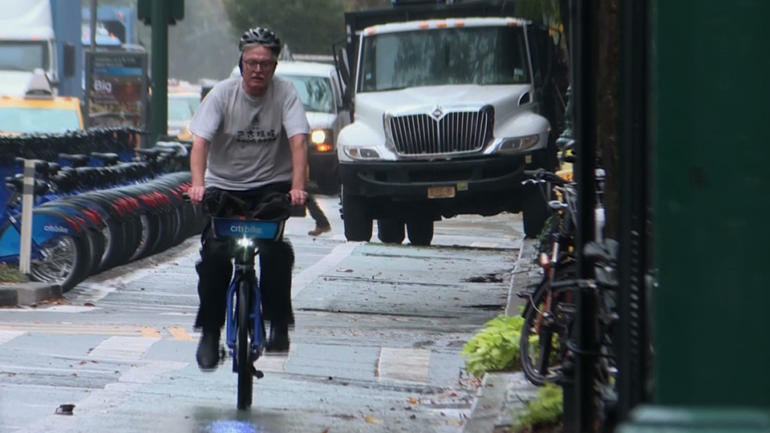Cities around the world are encouraging its citizens to use a bike instead of a car to ease on congestion and reduce carbon emissions.
But as biking’s popularity grows, so do fatalities on city streets. New York has had a record number of deaths this year and city leaders have just passed a new bill that will hopefully make its streets safer for cyclists.
CGTN’s Karina Huber reports.
23-year-old Australian tourist Madison Jane Lyden is memorialized by a white bicycle near Central Park in New York City. She was struck by a sanitation truck in 2018 while riding a bike. She later died in the hospital.
25 cyclists have been killed on New York’s streets so far this year-the highest death toll in 20 years. Six years ago, New York City launched its bike-sharing program Citi bike to encourage more people to cycle to and from work in a bid to ease congestion and pollution.
But biking in New York is not for the faint of heart. Of the city’s roughly 2,000 kilometers of bike lanes most are unprotected, meaning there is no barrier between cyclists and cars and trucks.
As more cyclists take to the streets more are getting hit by vehicles. Cities around the world are grappling with the same problem looking for solutions as biking’s popularity grows. European cities like Amsterdam are leading the pack with protected bike lanes. Guangzhou and Shanghai are investing heavily in the same.
To tackle the problem in New York, city officials just approved a new $1.7 billion plan that it hopes will revolutionize the city’s streets making them safer. Corey Johnson, City Council Speaker, Full Sot: “We are at a turning point. As a city, we know things are unsustainable and we need to make big changes. We’re going to show the rest of the country and hopefully the world, that we can remake cities to be better and we have to make big changes.”
The so-called “streets master plan” will link existing bike lanes across the city and build an extra 400 kilometers of protected bike lanes over a period of five years starting in 2021.
It builds on the mayor’s previous plan which was criticized for being too piecemeal.
The current plan also faces criticism from New York drivers who will lose free curbside parking in a city where garage parking can cost almost as much as rent.
“Some of those people who right now are just worried about losing their parking spot, maybe somebody who feels really good in a year or two about the reliability of the buses, and the reliability of the trains and the fact that on some days they may even take a bicycle because it’s safe and therefore we change our habits, we change our expectations. There’s no birthright to a free parking spot on our streets, ” Mary Beth Kelly, Cofounder, Families for Safe Streets, said.
Kelly’s husband of 32 years was killed by a tow truck while crossing an intersection on his bike in 2006. She’s spent the last 13 years advocating for change -change that has now become law.
“I think this is going to be really important for me in terms of managing my own grief and my rage-channeling it towards something that would turn this city into the bikeable, walkable place that it could be,” Kelly said.
 CGTN America
CGTN America

